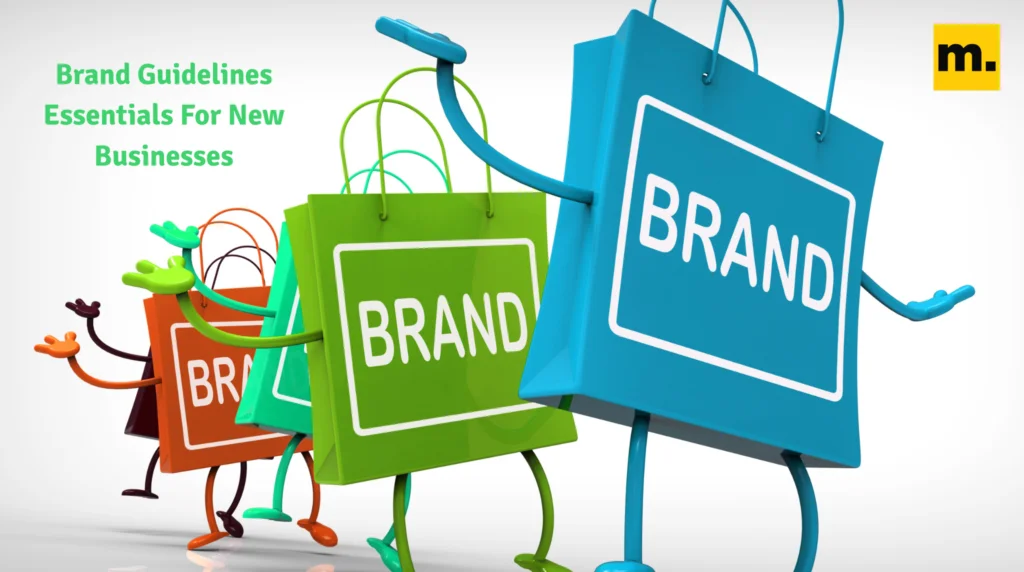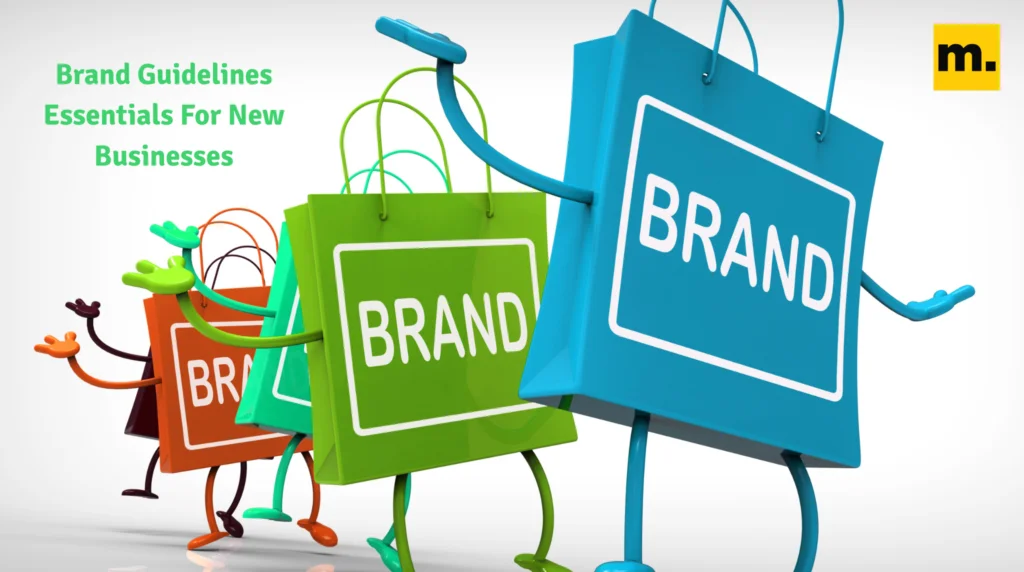Key Elements for a Strong Brand
What Every New Business Needs to Have in Their Brand Guidelines
Consistency, Identity, Recognition
Marked Communications | 30-05-2025

Table of Contents
What Every New Business Needs to Have in Their Brand Guidelines
Starting a new business is exhilarating and a bit intimidating. But before you start printing business cards, posting on the ‘gram, or designing your site, let’s discuss brand guidelines.
Think of them as your business’s instruction manual for looking sharp, sounding smart, and staying consistent. A brand without guidelines is like a band without a drummer: totally offbeat and all over the place.
So, what exactly should go into your brand guidelines? Grab a chai (or coffee), and let’s break it down.
What Are Brand Guidelines?
Brand guidelines (or brand style guides) are a playbook for how your brand must look, sound, and feel everywhere, online and off. They keep your team, designers, writers, marketers (and even future-you) on the same page, ensuring a consistent identity that people know immediately.
That is to say: No more 5 loose logos hanging around. No more 7 fonts used in one brochure. No more “Can we just wing it?”

01. Your Brand Story – Tell Them Why You Exist
Begin with the heart.
People buy stories, not products. Your brand story is not when you were started. It’s the why for what you do.
Add:
- Your mission (what you do every day)
- Your vision (the lofty dream)
- Your values (who you are)
- A brief backstory: Why did you begin? What problem are you solving?
Example:
“At Pawfect Snacks, we think your furry friend deserves healthy treats made with love (and real ingredients you can actually pronounce). We began in 2023 after our golden retriever turned out to have better taste in snacks than we did.”
2. Your Logo – And All Its Moods
Your logo is your brand’s face. You don’t want 10 different versions floating around.
Put in:
- Primary logo
- Secondary logo (smaller, more versatile version)
- Logo variations (black & white, color, icon-only, etc.)
- Minimum size restrictions
- What not to do with your logo (stretched out, pixelated, rainbow filter—you know what I mean)
Pro tip:
Add downloadable logo files (in PNG, JPG, SVG) to your guideline set for seamless sharing.
3. Colour Palette – Your Brand’s Vibe, Visualized
Your colours evoke emotions. Are you playful and bubbly? Soothing and natural? High-end and dramatic?
Define:
- Primary colors (your core 2-3)
- Secondary colors (for accents and versatility)
- Hex codes, RGB, and CMYK for each (so you can remain consistent across web and print)
Example:
Primary: Forest Green (#1B4332)
Secondary: Light Beige (#FFF8E1), Warm Brown (#7D5A50)
Choose colours like you’re collecting an Instagram feed for life.
4. Fonts – Choose Your Type, Carefully
Fonts are personality-filled. And no, you absolutely can’t use Comic Sans. Ever.
Include:
- Headline font (for titles)
- Body font (for readable content)
- Accent font (for highlights or quotes)
- Font sizes and hierarchy (what size for H1, H2, paragraphs, etc.)
Keep it simple:
Two fonts are great. Three, max. More than that? You’re writing a ransom note, not a brochure.
5. Imagery & Photography Style
A picture says a thousand words—so make sure they’re saying the right ones.
Define:
- Your image tone (light and airy? dark and moody?)
- What kind of photos to use (lifestyle, product photos, user-created content, etc.)
- What not to do (stocky, overly edited, off-brand)
Tip:
Make a Pinterest moodboard and share it with your team. It’s like a cheat sheet for visual vibes.
6. Brand Voice – How You Talk to the World
Your voice is your brand’s personality in words. Are you funny and quirky? Professional and calm? Chatty and warm?
Define:
- Tone of voice (fluffy, sarcastic, formal, assistive, brazen)
- Stock phrases or slogans
- Words you always say (and avoid using)
- Emoji or no emoji? Exclamation points or none?
Example:
- Tone: Friendly but not frilly
- DO use: “Let’s break it down.”
- DON’T use: “Synergistic alignment of core competencies.”
7. Business Basics – Because Clarity Is Cool
Often overlooked, but totally crucial. This is the “dry” section, but this is what makes you professional AF.
Add:
- Registered name and how to spell it (e.g., “Cheeseee Co.” and not “Cheesy Co.”)
- Tagline (if applicable)
- Website, social media handles, email IDs
- Legal disclaimers or trademark information
Consistency tip:
Ensure that your name and handle are precisely the same everywhere. Baffled customers aren’t loyal customers.
8. Do’s and Don’ts – The Brand Bible Part
Occasionally the simplest way to say what your brand is… is to say what it *isn’t*.
Use:
- Examples of right and wrong use of logo
- Good vs bad tone in social media titles
- Good colour combinations (and bad ones)
- Mockup or templates
Use pictures here!
Images are processed quicker than text. Demonstrate, don’t tell.
9. Packaging or Product Guidelines (If Applicable)
For sale? Whether it is soap or software, packaging is important.
Add:
- How your packaging should appear (materials, colour usage, logo positioning)
- Unboxing experience (how should a customer feel?)
- Labeling guidelines
- Safety or regulatory information (if required)
Even if digital product:
Demonstrate how your app or service UI should appear. Consistent buttons and banners, please!
10. Brand in Action – Make It Real
Roll it up with some examples of your brand in action.
Show:
- Sample social media posts
- Website mockups
- Email newsletters
- Business cards
- Ad creatives
This makes it easy for your team to know how to implement all those nice rules.
Final Thoughts: Build It Once, Use It Forever
Developing brand guidelines may seem like homework, but believe us, it’s worth it. Once you have this set up, it’ll save hours of confusion, back-and-forths, design catastrophes, and off-brand mayhem.
And it makes hiring new staff, agencies, freelancers, and partners a cinch. No guessing, no messing.
One final tip
Store your brand guide in a sharable format (PDF + Google Drive folder) and review and update it every year.
Because your business will expand, and your guidelines should expand with you.
Checklist Time
Here’s what every new business should have in their brand guidelines:
1. Brand story (mission, vision, values)
2. Logo usage rules
3. Colour palette with hex codes
4. Fonts & type hierarchy
5. Imagery style
6. Brand voice & tone
7. Business info (name, tagline, handles)
8. Do’s and Don’ts
9. Packaging or product rules
10. Brand in real-life examples
——
Struggling to build your brand guidelines from the ground up? Do not worry, even top brands began with a Google Doc and a dream. Just ensure yours did not resemble one created hastily at lunchtime.
Do you want to start your project now?

